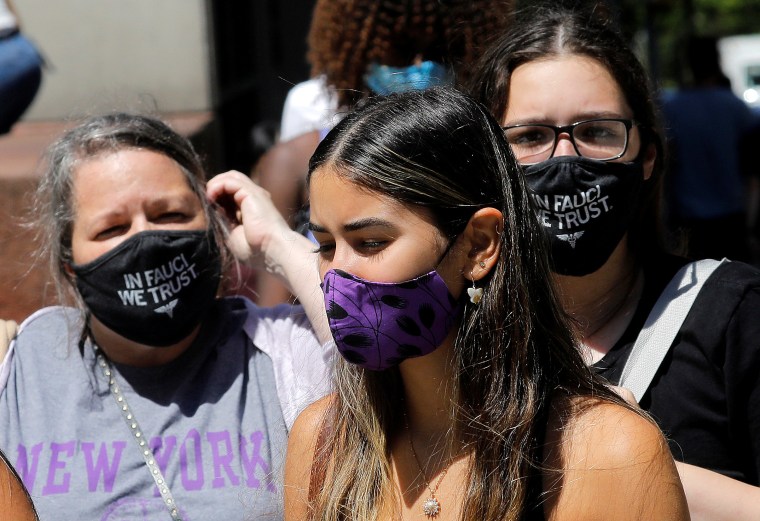The Centers for Disease Control and Prevention on Monday walked back information posted on its website just three days ago, which stated the coronavirus can spread through aerosolized droplets.
The CDC now says that Friday's guidance was posted "in error," and that new information will be issued shortly. The move is yet another misstep for the nation's leading public health agency, which recently reversed its guidance for the second time on testing asymptomatic people for the coronavirus.
Full coverage of the coronavirus outbreak
On Friday, an update posted to the CDC's website stated the virus can be transmitted through tiny, aerosolized droplets that are "produced when an infected person coughs, sneezes, sings, talks, or breathes."
That information was already well known, according to infectious disease experts.
It was "not surprising or jarring," Dr. Jill Weatherhead, an assistant professor of infectious diseases at Baylor College of Medicine in Houston, said.
"The scientific community has been raising the alarm about this since February, that airborne spread can happen," said Joseph Allen, an associate professor in the department of environmental health at the Harvard T.H. Chan School of Public Health.
So infectious disease experts were perplexed Monday, when the CDC scrubbed that section of the website of any mention of airborne transmission, writing that "a draft version of proposed changes to these recommendations was posted in error to the agency's official website."
The agency reverted to its previous language, stating that the virus is thought to spread "between people who are in close contact with one another (within about 6 feet)."
It remained unclear Monday afternoon when CDC would publish revised guidance on airborne transmission of the coronavirus.
"This is so destructive to this incredibly wonderful agency that we have loved and admired our entire careers," Dr. Ashish Jha, dean of the school of public health at Brown University, said. "This is amateur hour."
Science evolves and is guided by what doctors and researchers learn over time, but clear messaging is critical to a proper public health response to the virus.
"The CDC is like a North Star in terms of guiding this pandemic," Weatherhead said. "It's important that there is clear and concise communication so that everybody is on the same page."
"Hopefully we will get communication from the CDC to better understand why they're walking back on what we already know to be factual," she added.
The federal government appears to have been advised of the possibly for airborne spread of the virus early on in the pandemic.
"This is deadly stuff," President Donald Trump told journalist Bob Woodward in a Feb. 7 phone call. "You just breathe the air and that's how it's passed," the president said, according to The Washington Post.
Larger respiratory droplets, such as those emitted from coughs or sneezes, are likely the main drivers of the coronavirus. Those fall to the ground within about 6 feet, which is why experts encourage physical distancing of at least that much.
But there's also evidence that smaller droplets that linger in the air can contain the virus, and can infect others if inhaled. These droplets are called aerosols, and spread through what's referred to as airborne transmission. Unlike larger respiratory droplets, they don't fall to the ground as quickly.
In both instances, a person becomes infected if they come into contact with enough viral particles.
It's why public health experts encourage that gatherings, when necessary, remain outdoors. In enclosed spaces, virus-laden particles have nowhere to go, increasing the likelihood that they are inhaled.
But these mitigation efforts will become difficult as cold weather approaches.
"The single biggest thing you can do, if you go inside a building, is open the windows," Jha said.
Experts also recommend wearing masks indoors when with people from other households.
"It's awkward, but I do it," Dr. Ronald Collman, a professor of medicine in the division of pulmonary, allergy and critical care at the University of Pennsylvania's Perelman School of Medicine, said.
"It is going to be the most effective way to lessen the likelihood of person-to-person transmission," he added. "This may be the season for small gatherings with your most intimate family members."
As of Monday afternoon, nearly 7 million Covid-19 cases had been reported in the U.S. More than 200,000 people have died.
Follow NBC HEALTH on Twitter & Facebook.



